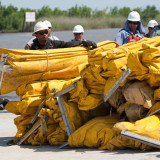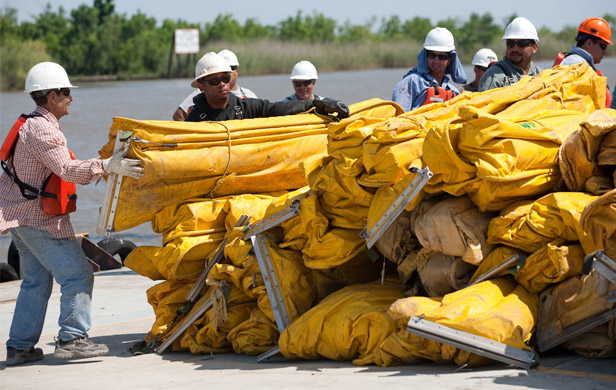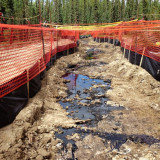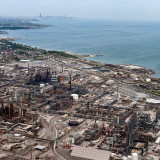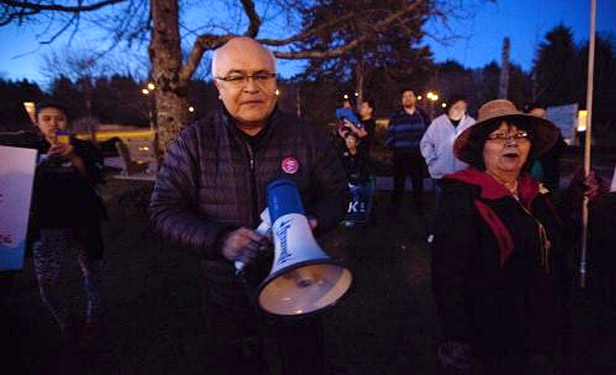
By The Canadian Press
KITIMAT, B.C. – The residents of Kitimat, B.C. have voted against the proposed Northern Gateway pipeline project in a non-binding plebiscite.
The ballot count from Saturday’s vote was 1,793 opposed versus 1,278 who supported the multi-billion dollar project — a margin of 58.4 per cent to 41.6 per cent.
“The people have spoken”
The results from two polling stations and an advance vote all showed a clear majority for the “No” side. Said Kitimat Mayor Joanne Monaghan in a statement issued after the vote Saturday night:
[quote]The people have spoken. That’s what we wanted — it’s a democratic process. We’ll be talking about this Monday night at Council, and then we’ll go from there with whatever Council decides.[/quote]
The $6.5-billion project would see two pipelines, one carrying oilsands’ bitumen from Alberta to Kitimat’s port, and a second carrying condensate — a form of natural gas used to dilute the bitumen — from Kitimat back to Alberta.
Kitimat would also be the site of a proposed two-berth marine terminal and tank farm to store the thick Alberta crude before it’s loaded onto tankers for shipment to Asia.
Until this vote, Kitimat had remained neutral in its opinion on the controversial project. It didn’t take part in the joint-review process, which heard from hundreds of people before a federal panel approved the project with 209 conditions.
The federal cabinet is expected to release its decision on Northern Gateway by June.
“Jobs” argument failed to persuade public
Northern Gateway’s campaign has concentrated on the promise of 180 permanent, direct, local jobs worth $17 million, and more spinoff jobs for contractors and suppliers.
Calgary-based Enbridge, the company behind Northern Gateway, has emphasized its commitment to safety and the environment, saying the National Energy Board Joint Review Panel, which held two years of hearings on the project, had made many of the company’s voluntary commitments a mandatory part of the conditions for approval.
“As a long time-resident of northwestern B.C., I passionately believe that Northern Gateway is the right choice for Kitimat and for the future of our community,” Donny van Dyk, Northern Gateway’s Kitimat-based Manager of Coastal Aboriginal and Community Relations, said in a statement issued after Saturday’s vote.
“Over the coming weeks and months we will continue to reach out and listen to our neighbours and friends so that Northern Gateway can build a lasting legacy for the people of our community.”
The project’s main opponent, the local environmental group Douglas Channel Watch, maintains the risk from either a tanker accident or a pipeline breach is too high for the small number of jobs the pipeline would bring to the community.
Vote pitted Kitimat Council vs. Haisla First Nation
The plebiscite had also raised tensions between the District of Kitimat and the nearby Haisla First Nation, which is adamantly opposed to Northern Gateway.
Many Haisla were not allowed to vote because Kitamaat Village, a federal Indian reserve, is outside the municipal boundaries.
In a letter to local media, Haisla Chief Coun. Ellis Ross had called the decision to hold a vote at this late date a “slap in the face” for all the work done by the Haisla on the project.
A demonstration by members of the Haisla Nation at Kitimat’s City Centre Mall quickly turned into a celebration after the vote results were announced. The Haisla Spirit of Kitlope Dancers led the celebration with drumming, singing and dancing.
MP Cullen joins party
Some Kitimat residents also joined the party, as did Nathan Cullen, the NDP Member of Parliament for Skeena Bulkley Valley.
Cullen, who has been a harsh critic of the project, said Saturday’s vote sends a clear message that Stephen Harper’s government must listen to.
[quote]This is a resounding no to the Conservative policies. This is one of the most powerful grass roots things I have ever been associated with. This is good politics.[/quote]
Gerald Amos, an environmentalist and former member of the Haisla Nation Council, said, “The town of Kitimat has rejected a project that is not good for our economy. It endangers everything we worked for as a people here in Kitimat for the last ten thousand years.”
Vote non-binding
A key reason for holding the vote was to fulfil a 2011 promise made by all municipal election candidates in Kitimat to poll citizens on the pipeline project.
But other than gauging public reaction to the proposed pipeline, it remains unclear — even to Kitimat council — what the non-binding vote will mean.
Even the plebiscite question, as chosen by the District of Kitimat council, was controversial, because it focused on the 209 conditions placed on the project by the Joint Review Panel: “Do you support the final report recommendations of the Joint Review Panel (JRP) of the Canadian Environmental Assessment Agency and National Energy Board, that the Enbridge Northern Gateway project be approved, subject to 209 conditions set out in Volume 2 of the JRP’s final report?”


